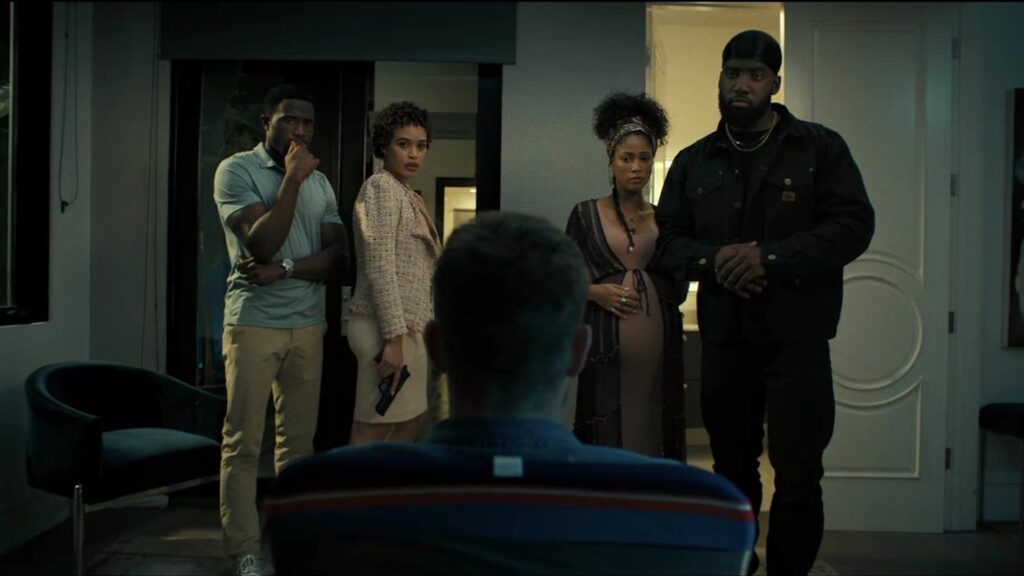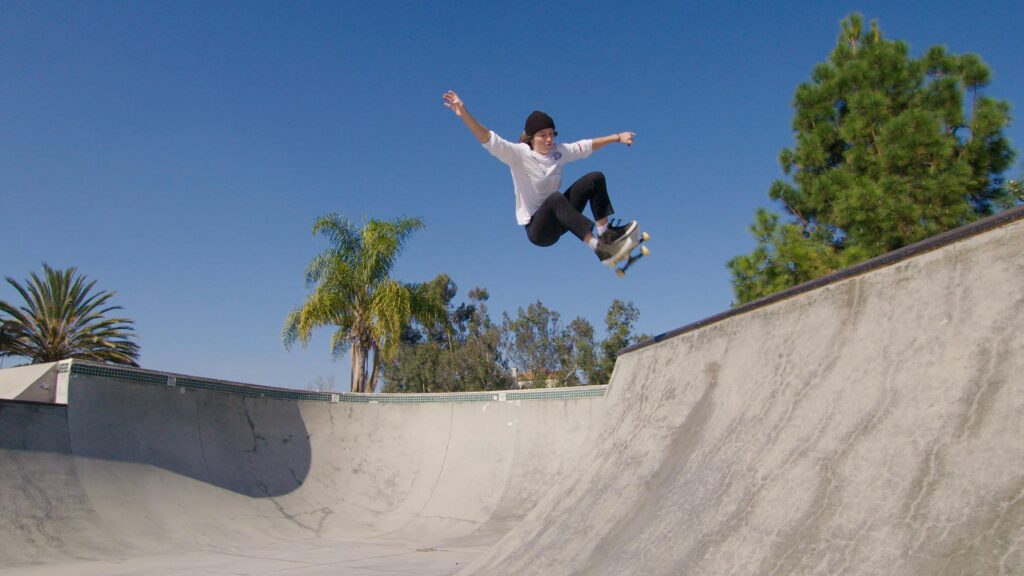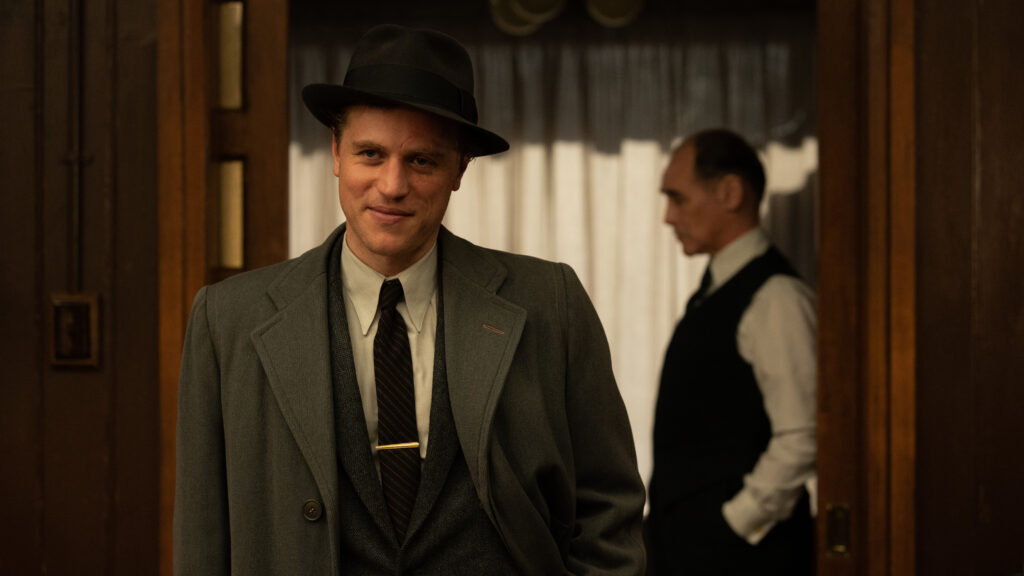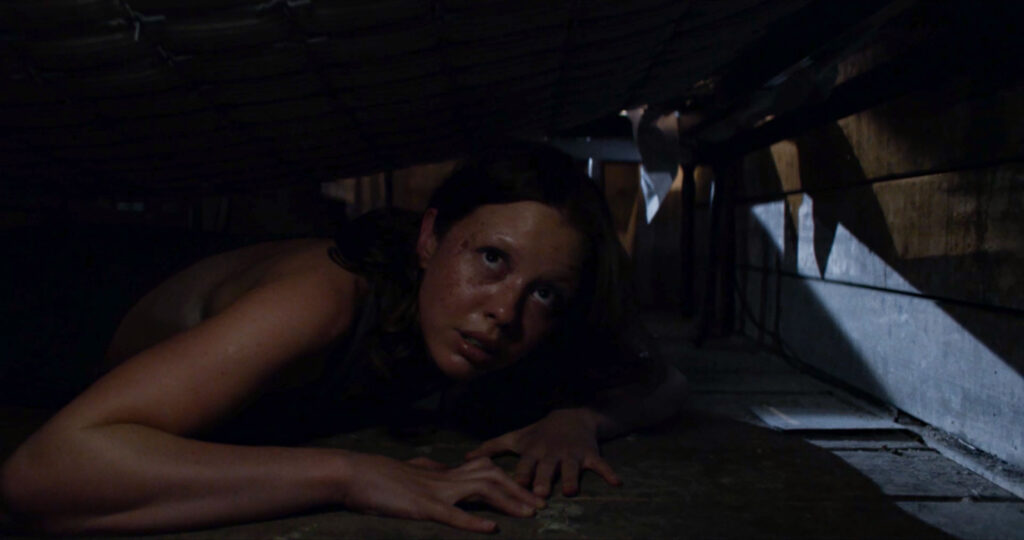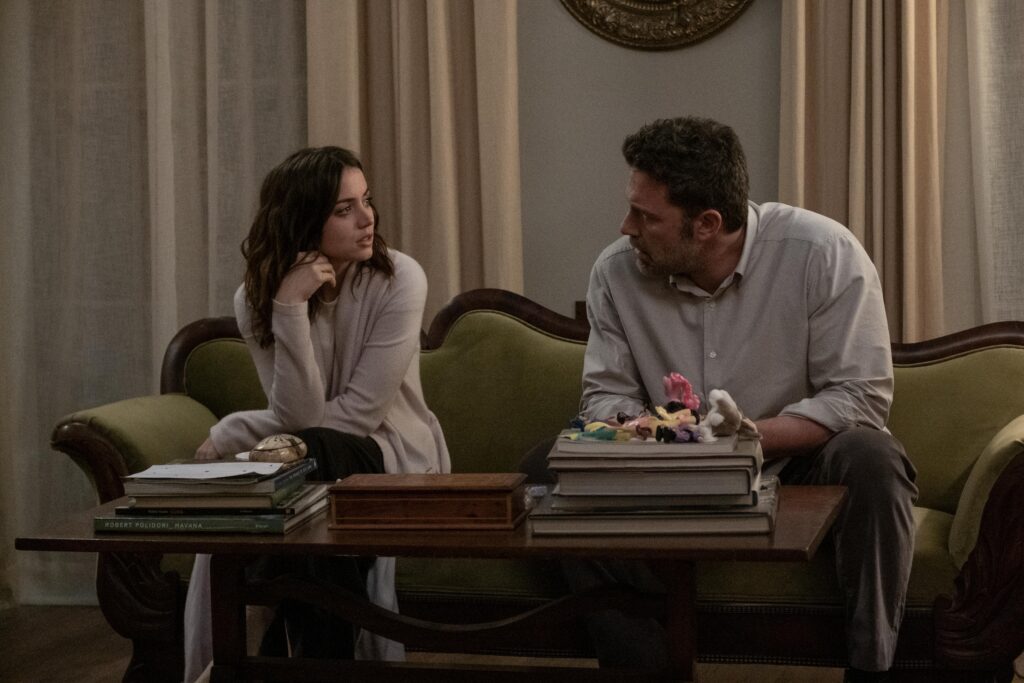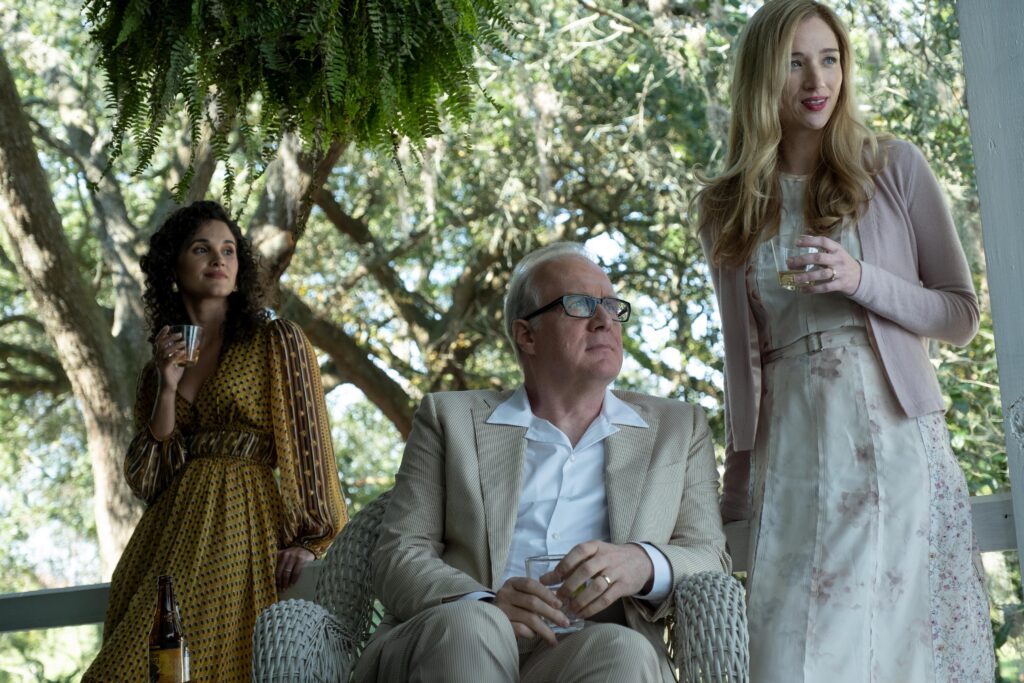March 23, 2022

The following is a press release from the South by Southwest Conference and Festivals:
The South by Southwest® (SXSW®) Conference and Festivals announced the 2022 Jury and Special Award winners of the 29th SXSW Film Festival. Feature films receiving Jury Awards were selected from the Narrative Feature and Documentary Feature Competition categories. SXSW also announced all other juried sections, including Shorts, Design and XR Experience Awards. Special Awards announced included: Louis Black “Lone Star” Award, Adobe Editing Award, Adam Yauch Hörnblowér Award, ZEISS Cinematography Award, the Mailchimp Support the Shorts Award and the Fandor New Voices Award.
All 2022 film categories will be eligible for category-specific Audience Awards, which will be certified by the accounting firm of Maxwell Locke & Ritter. Online Screenings and Audience Award Voting will conclude at 9am CT on Monday, March 21. Winners will be announced via sxsw.com that week.
“It was extraordinary to gather together in person again after so long and we are so grateful to the filmmakers and audience who joined us at SXSW 2022 in Austin, Texas for our first in-person event since 2019,” said Janet Pierson, VP, Director of Film. “The program was celebrated across the board and tonight we get to give a special shout-out to the award winners.”
The 2022 SXSW Film Festival Juries consisted of:
Narrative Feature Competition: Sheri Linden, The Hollywood Reporter; Siddhant Adlakha, filmmaker and critic; Jenelle Riley, Variety
Documentary Feature Competition: Jason Bailey, critic, historian and author; Carlos Aguilar, film critic and journalist; Beandrea July, freelance film critic
Louis Black “Lone Star”: Richard Whitaker, The Austin Chronicle; Kathy Blackwell, Executive Editor, Texas Monthly; Karen Valby, author and freelance writer
Narrative Shorts Program: Mohammad Gorjestani, filmmaker; Natalie Haack Flores, VP Development, Nuyorican Productions; Inga Diev, GM Ouat Media
Documentary Shorts: Greg Rhem, writer, director, producer and creative consultant for MTV Documentary Films; Ryan Harrington, Head of film, Kinema; Yvonne Ashley Kouadjo, series producer, New York Times‘ Op-Docs
Animated Shorts: Julia Pott, animator; John Agbaje, SVP of Animation, Bad Robot; Brook Keesling, Head of Animation Talent Development, Bento Box Entertainment
Midnight Shorts: Barbara Crampton, actor and producer; Dana Gills, SVP of Development and Production, Monkeypaw; Bea Sequeira, producer, Blumhouse
Music Videos: Andrew Unterberger, Deputy Editor, Billboard; Shanna Green, Director of Communications, Commercials and Short-Form Content, Anonymous Content; Meghan Oretsky, Senior Curator, Vimeo
Texas Shorts: Cat Cardena, Associate Editor, Texas Monthly; Eric Webb, Entertainment Editor, Austin-American Statesman; Monique Walton, filmmaker
Texas High School Shorts: Bart Weiss, Educator and Founder, Dallas VideoFest; Lindsey Ashley, Deputy Director, Texas Film Commission; Dr. Tere Garza, Professor of Communication, St Edward’s University
Episodic Pilot Competition: Randi Kleiner, Co-Founder and CEO, SeriesFest; Selome Hailu, Variety; Augustine Frizzell, filmmaker
Excellence in Title Design: Victoria Nece, Principal Product Manager, Motion Graphics, Adobe; Hazel Baird, Creative Director and Designer, Elastic; Saskia Marka, independent designer
Excellence in Poster Design: Barak Epstein, Texas Theatre in Dallas, producer; Becky Cloonan, illustrator and cartoonist; Kevin Tong, illustrator
XR Experience Jury: Nonny de la Peña, founder, Emblematic Group; Kent Bye, Voices of VR; Loren Hammonds, Producer, Co-head of Documentary, TIME Studios
The 2022 Film Festival program includes 100 features including 76 World Premieres, 4 International Premieres, 4 North American Premieres, 2 U.S. Premieres, 14 Texas Premieres + 111 Short Films including 24 Music Videos, 12 Episodic Premieres, 6 Episodic Pilots, 30 XR Experience projects (formerly Virtual Cinema), and 19 Title Design Competition entries.
Films will continue to be available on the SXSW platform until 9:00am CT on Monday, March 21. SXSW will continue running the Online Shift72 Screening Library through March 31, 2021, for those films that have opted-in to the extended timeframe.
The SXSW 2022 Film Festival Awards:
Feature Film Grand Jury Awards
NARRATIVE FEATURE COMPETITION Presented by Panavision

Winner: I Love My Dad
Director/Screenwriter: James Morosini, Producers: Bill Stertz, Patton Oswalt, Sean O’Grady, Dane Eckerle, Phil Keefe, Daniel Brandt, Sam Slater
“A bold, funny film that marks an impressive feature debut for writer-director-star James Morosini, I Love My Dad finely threads the needle with its tale of an estranged father (Patton Oswalt) who catfishes his son (Morosini) in an attempt to reconnect. Working from a screenplay based on his own real-life story, Morosini displays massive empathy as a filmmaker to get into the mind of the father he feels betrayed by, and also as an actor portraying the impact of that betrayal. He’s aided by a great cast, particularly Oswalt.”
Special Jury Recognition for Extraordinary Cinematic Vision: Cast and Crew, It Is in Us All
“Every creative element of It Is in Us All, from its editing and music to its performances and cinematography, works in tandem to craft a haunting atmosphere. Writer-director-actor Antonia Campbell-Hughes’ extraordinary feature debut is a remarkable example of how the various artistic facets of a movie can converge to create something cinematic, in the purest and most soulful sense: a work that accesses some part of you that feels hidden away.”
Special Jury Recognition for Breakthrough Performance: Elizaveta Yankovskaya, Nika
“In her first lead role in a feature, Elizaveta Yankovskaya delivers a knockout portrait brimming with rage, joy, despair, uncertainty and 20-something yearning. She plays Nika Turbina, a real-life figure who, after fame was thrust upon her as a child poet, finds herself past her prime before she’s 30. Whatever narrative conjectures the intimate drama might make, there isn’t a moment in Yankovskaya’s breathtaking performance that doesn’t ring true with messy emotional complexity, or that doesn’t feel like unpredictable life itself unfolding before our eyes.”
A big thanks to our Narrative Feature Competition presenting sponsor Panavision, the global provider of optics, cameras, and end-to-end services that power the creative vision of filmmakers.
DOCUMENTARY FEATURE COMPETITION Presented by IMAX
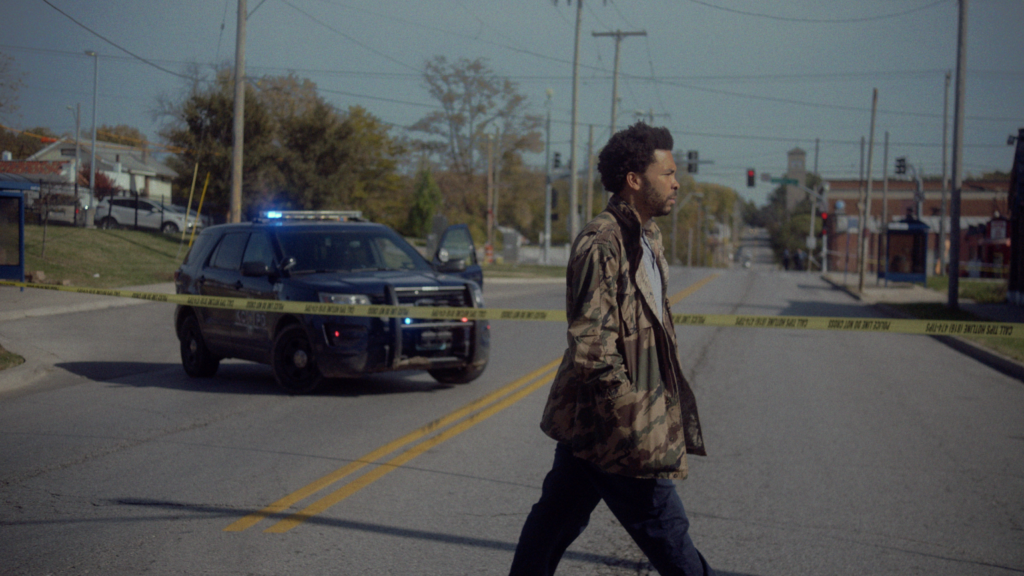
Winner: Master of Light
Director: Rosa Ruth Boesten, Producers: Roger Ross Williams, Anousha Nzume, Ilja Roomans
“In both substance and form, Master of Light is a gift. The earnest and gifted painter George Anthony Morton embeds viewers in his world as he struggles to render his mother — both on the canvas and in his psyche. Boesten disabuses us of static tropes about America’s merciless drug war and about contemporary art. With astonishing intimacy, the film’s visuals build an artful bridge between two- and three-dimensional realms that are deeply rooted and utterly transcendent. Put this painting of a film in a museum, next to a Rembrandt and a Morton.”
Special Jury Recognition for Exceptional Intimacy in Storytelling: Bad Axe
Director: David Siev, Producers: Jude Harris, Diane Quon, Katarina Vasquez, David Siev
“Stories centered on the pursuit of the “American Dream” abound. Rarely do they portray the sacrifices and recurrent trials that the promise of a better life entails the way director David Siev accomplishes with Bad Axe. Examining those closest to him with profound compassion and incisive curiosity, he paints a distinct and easily recognizable portrait of the alienation many feel in the place they call home, by birth or by circumstance. For its ability to reveal something unexpected about the American fabric and the American family, Bad Axe deserves celebration.”
Special Jury Recognition for Acting in a Documentary: Steve Glew, Pez Outlaw
“Steve Glew is the kind of colorful character that most documentarians dream of capturing, a born storyteller with a crackerjack sense of scene-setting and comic timing. In the tradition of Muhammad Ali in The Greatest and Evel Knievel in Viva Kneivel!, The Pez Outlaw‘s reenactment sequences cast the only actor who could credibly bring Mr. Glew’s exploits to life: the man himself. There’s something uniquely American about Glew’s mixture of chutzpah, ingenuity, charisma, and grievance that makes him a mesmerizing onscreen presence.”
Since 1970 IMAX Documentaries have immersed audiences in real-life stories told on a grand scale. In 2022 that tradition continues as a new generation of filmmakers turns its lens to a theatrical experience like no other. Today, IMAX is honored to present this year’s documentary award to recognize the future — gifted storytellers who are bringing their stories to audiences in powerful and wondrous ways.
SHORT FILM GRAND JURY AWARDS Presented by IMDbPro
NARRATIVE SHORT COMPETITION

Winner: All the Crows in the World
Director/Screenwriter: Tang Yi, Producer: Haozheng Li
“The jury recognizes All The Crows in the World as the Jury Award Winner, a film that reminded us of the power of short-form cinema as a stand-alone art form on its own. The film’s balancing of surrealism, bizarreness, tenderness, and reality was only outdone by its inventive narrative and critiques of patriarchal culture, paired with execution by a director who is clearly in command of her craft.”
Special Jury Recognition for Directing and Community Filmmaking: Glitter Ain’t Gold
Director/Screenwriter: Christian Nolan Jones, Producers: Maia Miller, T. Popps, O. Valerie Nicolas
“The jury awards Glitter Ain’t Gold a Special Jury Recognition for Directing and Community Filmmaking, which stood out for its vibrant narrative and authentically palpable energy filled with compelling visuals and inventive editing harmoniously coupled with powerfully nostalgic music. It was clear that its level of specificity was a direct result of a community that came together to make a profound piece of art that touched us deeply.”
Special Jury Recognition for Outstanding Performances: Aphrodite Armstrong, Kyle Riggs, West by God
“The jury awards a Special Jury Recognition for Outstanding Performances to Aphrodite Armstrong and Kyle Riggs for West by God. Their dynamic and visceral performances beautifully emulate the powerful themes within the film about the human condition and the need for love, no matter what your walk of life.”
DOCUMENTARY SHORT COMPETITION

Winner: Long Line of Ladies
Directors: Rayka Zehtabchi, Shaandiin Tome, Producers: Garrett Schiff, Pimm Tripp-Allen, Rayka Zehtabchi, Sam Davis, Dana Kurth
“Long Line of Ladies presents an affecting perspective on celebrated generational cultural traditions. The tapestry of beautiful cinematography and vivid character moments elevates the filmmakers’ vision, inviting us into a devoted community that is committed to preserving their heritage.”
Special Jury Recognition for Visual Reflection: not even for a moment do things stand still
Director: Jamie Meltzer, Producers: Annie Marr, Jamie Meltzer, Suzanne Brennan Firstenberg
“In a simple, yet profoundly moving way, not even for a moment do things stand still allows us to sincerely reflect on the lives we have lost over the past two years. The poetic visual language gives us a new perspective on a sadly familiar topic of love, life and loss.”
MIDNIGHT SHORTS
Winner: Moshari
Director/Screenwriter: Nuhash Humayun, Producers: Bushra Afreen, Nuhash Humayun
“Moshari is a terrifying, spine-chilling horror tale centering two sisters that renders a fresh take on blood sucking creatures set in an non-traditional post-apocalyptic world. The compelling performances, the haunting visuals and the layered storytelling highlight the director’s command of the genre and make him someone to watch. Nuhash Humayun has the ability to take recognizable elements, flip them on their head and turn them into nightmares. Moshari has created an allegorical story that will resonate with the viewer on a deeper level.”
Special Jury Recognition for Powerful “Short Trip”: Omi
Director: Kelly Fyffe-Marshall, Screenwriters: Tamar Bird, Kelly Fyffe-Marshall, Producer: Tamar Bird
“Unexpected, effective and engaging film that in under three minutes manages to set up the lore, get us invested in the characters, while leaving us fulfilled and still craving more. Kelly Fyffe-Marshall has created a grounded supernatural story that is provocative, mysterious and unforgettable.”
ANIMATED SHORTS

Winner: Bestia
Director: Hugo Covarrubias, Screenwriters: Martín Erazo, Hugo Covarrubias, Producers: Tevo Díaz, Hugo Covarrubias
“Bestia is an exquisite, intimate peek at the dreams and memories of a sadistic secret agent, set in a tactile stop-motion non-wonderland, where a porcelain exterior isn’t enough to keep the damage away.”
Special Jury Recognition for Unexpected Emotion: Les Larmes de la Seine
Directors/Screenwriters: Yanis Belaid, Eliott Benard, Producer: Carlos De Carvalho
“The magic trick of this film is that it describes great tragedy almost entirely with joy. History comes alive as we are immersed in raw beautiful humanity that jokes, laughs, feels nervous, fights, and dies. By illustrating extreme distress with astonishing euphoria, the directors create a fever dream “photo negative” glimpse of what we’ve missed by living with hatred and abuse rather than love and understanding. Like a sad melody played in major key, the film is both haunting and uplifting while stirring emotions like no film we’ve ever seen.”
Special Jury Recognition for Visceral Storytelling: Something in the Garden
Director/Screenwriter/Producer: Marcos Sánchez
“It is so important to keep your brain open to play, and we commend this film’s playful spirit combined with its beautiful animation, reminiscent of a graphic novel. It felt at the perfect cross section of horror and ASMR, using impeccable pacing and sound design to take us on a visceral journey that thrilled, scared and delighted us. A brilliant use of the animated short form medium!”
MUSIC VIDEOS

Winner: Desirée Dawson – ‘Meet Me at the Light’
Director/Screenwriter: Alexander Farah
“Without a single detail wasted, we were all moved to tears by this powerful story from a first-time music video director. Featuring equally beautiful performances, editing, and cinematography, we present the Best Music Video award to Desirée Dawson – Meet Me at the Light by Alexander Farah.”
Special Jury Recognition for Going the Extra Mile: Myd – ‘Let You Speak’
Director/Screenwriter: Dan Carr
“Funny, unexpected, and with a meta wink to the industry, our special jury mention went above and beyond our expectations, taking us around the world to various locations with a group of ragtag misfits that made us LOL along the way. Hence, the ‘Extra Mile’ award. The Special Jury Award for Going The Extra Mile Goes to Myd “Let You Speak” by Dan Carr.”
TEXAS SHORTS

Winner: Folk Frontera
Directors: Alejandra Vasquez, Sam Osborn
“Centered around characters who call the desert borderlands of Texas their home, Folk Frontera turns the traditional documentary form on its head. Filmmakers Alejandra Vasquez and Sam Osborn imbue the documentary with the same magic and surrealism that feels authentic to the Chihuahuan Desert and its communities. Dreamlike visuals and nuanced presentation of the subjects’ stories make for a special experience.”
Special Jury Recognition for Vision: Birds
Director/Screenwriter: Katherine Propper, Producer: Sophia Loffreda
“Katherine Propper’s Birds feels both fresh and warmly familiar to anyone who’s grown up during a Central Texas summer. Members of the film’s exceptional young ensemble shine in natural performances that help us see gorgeously shot scenery in a new light.”
TEXAS HIGH SCHOOL SHORTS

Winner: Honeybee
Director/Screenwriter/Producer: Emilio Vazquez Reyes
“Honeybee is a beautifully-written, thoughtfully-crafted film that unfolds with a gentle and disciplined reveal, helping to humanize the experience of an undocumented immigrant. We felt this film was a graceful way to tell a difficult story, using all of the important elements like cinematography, music and editing to both advance the story and sincerely engage with the audience.”
Special Jury Recognition for Artistic Expression: It’s Getting Bad Again
Director/Screenwriter: Sarah Reyes, Producers: Sarah Reyes, Kenneth Rogers
“As an artist, Sarah Reyes captures a roller-coaster of an emotional exploration that balances darkness, humor and music in a poetic and refreshing way, all the while prompting an important dialogue about mental health awareness.”
A big thanks to our presenting sponsor, IMDbPro. Celebrating its 20th anniversary, IMDbPro is the essential resource for entertainment industry professionals. This membership-based service empowers entertainment professionals with information and tools designed to help them achieve success throughout their career. IMDbPro has an ongoing commitment to supporting and collaborating with organizations that create greater diversity, equity and inclusion in the entertainment industry and is a service of IMDb, the #1 movie website in the world. Learn more at www.imdbpro.com and follow @IMDbPro
MailChimp is another proud supporter of the Shorts program and have created their own award to help further the career of one lucky filmmaker, as well as provided financial prize support for all of the SXSW Shorts Jury Awards winners.
EPISODIC PILOT COMPETITION

Winner: Something Undone
Director: Nicole Dorsey, Screenwriters: Michael Musi, Madison Walsh, Producers: Max Topplin, Jordan Hayes
“The jury honors Something Undone for cleverly rethinking and repurposing oft-used elements of mystery/horror storytelling. The subtlety of the episode’s writing and acting are complemented by specific and stylized direction and cinematography. And above all, Something Undone sets itself apart with its smart use of diegetic sound, establishing quietly humorous commentary on the sounds of the genre at large — while also totally terrifying us in just ten minutes.”
Special Jury Recognition for Unique Vision in Writing and Directing: Pamela Ribon and Sara Gunnarsdóttir, My Year of Dicks
“For its thoughtful curation of imagery combined with a funny and inventive script, the Special Jury Recognition for Unique Vision in Writing and Directing goes to Pamela Ribon and Sara Gunnarsdóttir for My Year of Dicks. Their bold voices overlap to make for an experience of feminine youth and sexual exploration that is both relatable and entirely its own.”
SXSW Film Design Awards Presented by Adobe
POSTER DESIGN COMPETITION

Winner: More Than I Remember
Designer: Yen Tan, Maya Edelman
“This poster evokes so many feelings at once, from the captivating gaze to the lush swirl of colors that surround you — it draws you in, tempting you to look harder, to try and unlock whatever secret is hidden just beyond reach. The text and illustration are perfectly integrated to create something powerful and mysterious, catching not just your attention, but your imagination as well.”
Special Jury Recognition: The Sentence of Michael Thompson
Designer: Juan Miguel Marin
“Understated intensity and a timeless quality make this poster truly effective — from across the room it immediately catches the eye. Type, design, and image work together to form a complete narrative, one you want to know more about. Understated intensity and a timeless quality make it truly effective.”
TITLE DESIGN COMPETITION

Winner: Foundation Title Sequence
Designer: Ronnie Koff
Company: Imaginary Forces
“A beautifully constructed sequence that encapsulates the show’s futuristic setting as humans have colonized the galaxy. Using a particle system to form these incredible images each frame is a visual triumph as we journey through this vibrant main title.”
Special Jury Recognition: The White Lotus Title Sequence
Designers: Katrina Crawford, Mark Bashore
Company: Plains of Yonder
“This title’s distinctive design perfectly sets up the audience for the show and reflects the suffering before enlightenment of its protagonists. Its stunning illustrations capture the soul of the story and are enhanced by the flawless score.”
XR EXPERIENCE COMPETITION

Winner: On the Morning You Wake (To the End of the World)
Directors: Dr. Jamaica Heolomeleikalani Osorio, Mike Brett, Steve Jamison, Pierre Zandrowicz, Arnaud Colinart, Screenwriters: Mike Brett, Steve Jamison, Jamaica Heolimeleikalani Osorio, Producers: Arnaud Colinart, Mike Brett, Steve Jamison, Jo-Jo Ellison
“On The Morning You Wake (To the End of the World) is an emotionally impactful and beautifully told story, delivered with stunning technical craftsmanship. This project explores the potential of immersive experiences, refining the grammar of spatial narrative. This particular story deals with the urgency of nuclear disarmament that has very unfortunately come into sharp focus due to current events. It effectively presents a massive geopolitical issue and grounds it in emotional and personal stories, translating what are usually abstract concepts into an embodied context.”
Special Jury Recognition for Immersive Storytelling: (Hi)story of a Painting: The Light in the Shadow
Directors: Quentin Darras, Gaëlle Mourre, Screenwriter: Gaëlle Mourre, Producers: Charlotte Mikkelborg, Gaëlle Mourre
“(Hi)story of a Painting: The Light in the Shadow receives a Special Jury Recognition for immersive storytelling. This experience uses the medium of VR to transport us into history, revealing the story of a lesser-known female baroque artist, her resistance to the patriarchy and determination in the face of adversity.”
SXSW Special Awards

Fandor New Voices Award
Fandor is proud to present the first ever Fandor New Voices Award, celebrating an outstanding feature making its worldwide premiere this year at the 35th annual SXSW festival. At Fandor, we are delighted to elevate the work of inspiring, imaginative, and independent storytellers, so it is with great pleasure that we present the Fandor New Voices Award to a female or person of color who is making their directorial debut with a Narrative Feature or Documentary. Fandor is and always will be proud to uplift the work of these amazing filmmakers.
Fandor New Voices Award
Presented to: What We Leave Behind
Director: Iliana Sosa, Producers: Emma D. Miller, Iliana Sosa, Isidore Bethel (co-producer)

Adam Yauch Hörnblowér Award
In honor of a filmmaker whose work strives to be wholly its own, without regard for norms or desire to conform. The Adam Yauch Hörnblowér Award is presented to a filmmaker from our Visions screening category.
Adam Yauch Hörnblowér Award
Presented to: Chee$e
Director/Screenwriter: Damian Marcano, Producer: Alexa Marcano
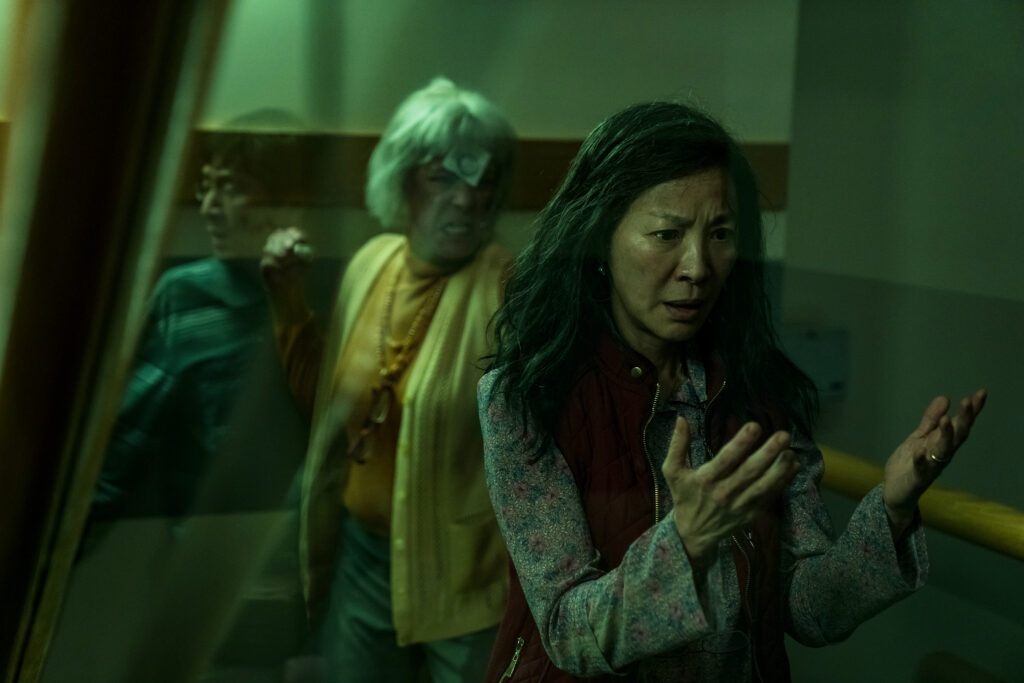
Adobe Editing Award
Adobe is committed to celebrating creativity for all and empowering everyone to bring their stories to life. By creating greater opportunity for all voices, we can enact change in our communities and move the world forward. We are proud to celebrate the art and craft of editing as we grant the Adobe Editing Award at the SXSW Film Awards. We are also pleased to spotlight this year’s incredible title and poster designers through the Film Design Awards presented by Adobe.
Adobe Editing Award
Presented to: Everything Everywhere All At Once
Editor: Paul Rogers

Louis Black “Lone Star” Award
To honor SXSW co-founder/director Louis Black, a jury prize was created in 2011 called the Louis Black “Lone Star” Award, presented to a feature film world premiering at SXSW that was shot primarily in Texas or directed by a current resident of Texas. (Opt-in Award)
Louis Black “Lone Star” Award
Winner: What We Leave Behind
Director: Iliana Sosa, Producers: Emma D. Miller, Iliana Sosa, Isidore Bethel (co-producer)
“Iliana Sosa’s exquisite documentary What We Leave Behind is a love letter to her Mexican grandfather, whose final decline she chronicles with artful grace. It is also a moving look at a family disconnected by both border and dreams, and how their patriarch, too old now for his monthly 20-hour bus rides from Durango into Texas, worries who will hold the center once he’s gone. Eighty-nine year old Julian has the face and gravitas of an old time movie star. Sosa has made a profound, gorgeous movie worthy of her precious subject.”

ZEISS Cinematography Award
ZEISS Cine Lenses is honored to be returning this year to support the SXSW film community in the Cinematography category. We believe that by supporting the art within the frame, ZEISS helps filmmakers realize their creative vision.
ZEISS Cinematography Award
Winner: A Vanishing Fog
Cinematographer: Gio Park
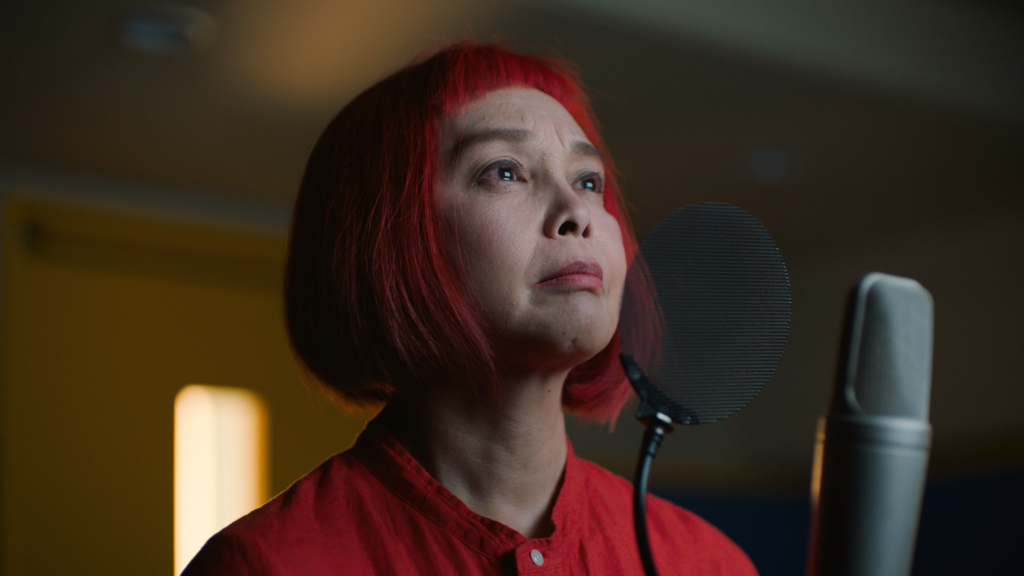
Mailchimp Support the Shorts Award
Mailchimp is committed to uplifting and supporting creators. We’re so proud to support SXSW by helping short films win big. We congratulate the honorees of the Support the Shorts Award as well as the entire SXSW-invited filmmaking community.
Mailchimp Support the Shorts Award
Presented to: The Voice Actress
Director/Screenwriter: Anna J. Takayama, Producer: Joe Skinner
“With its impeccable compositions and captivating lead performance, The Voice Actress offers a sensitive peek behind the scenes of an ever-changing industry. This patient study of imagination and aging achieves extraordinary depth thanks to Anna J. Takayama’s soulful direction, and we are delighted to support the career of such a remarkable talent.”
SXSW is proud to be an official qualifying festival for the Academy Awards® Short Film competition. Winners of our Best Animated, Best Narrative and Best Documentary Short Film categories become eligible for Academy of Motion Picture Arts and Sciences awards (Oscars). Any British Short Film or British Short Animation that screens at SXSW is eligible for BAFTA nomination. Films are also eligible for the Independent Spirit Awards, more information on eligibility here.
The South by Southwest® (SXSW®) Conference and Festivals announced the Audience Award winners for the 29th SXSW Film Festival. The Audience Awards follow the previously announced 2022 Jury Awards and the 40 Years of Massive Talent Award presented to Nicolas Cage at The Unbearable Weight of Massive Talent screening on Saturday night. For the complete list of 2022 Award Winners, visit www.sxsw.com/festivals/film-awards/.
Over the course of nine days the SXSW Film Festival screened 101 features including 76 World Premieres, 4 International Premieres, 4 North American Premieres, 2 U.S. Premieres, 14 Texas Premieres, plus 111 Short Films including 24 Music Videos, 12 Episodic Premieres, 6 Episodic Pilots, 30 XR Experience projects (formerly Virtual Cinema), and 19 Title Design Competition entries.
Films in the SXSW 2022 lineup screened in the following categories: Headliners; Narrative Feature Competition presented by Panavision; Documentary Feature Competition; Narrative Spotlight; Documentary Spotlight; Visions; Midnighters; Global presented by MUBI; 24 Beats Per Second; and Festival Favorites. The Episodic program consisted of Episodic Premieres and the Episodic Pilot Competition. The SXSW 2022 Shorts Film Program presented by IMDbPro featured seven competitive sections. Our XR Experience Competition, Spotlight and Special Events programming were held in-person with a selection of works in our XR Experience World in VRChat, presented by Non-Fungible Labs. All Categories with the exception of Special Events were eligible for section-specific Audience Awards.
Select conference sessions and music festival content is available to registrants through April 17 on the SXSW Online Schedule and Connected TV app. A full list of available content can be found here.
2022 SXSW Film Festival Audience Award Winners:
NARRATIVE FEATURE COMPETITION presented by Panavision

Audience Award Winner: I Love My Dad
Director/Screenwriter: James Morosini, Producers: Bill Stertz, Patton Oswalt, Sean O’Grady, Dane Eckerle, Phil Keefe, Daniel Brandt, Sam Slater
DOCUMENTARY FEATURE COMPETITION

Audience Award Winner: Bad Axe
Director: David Siev, Producers: Jude Harris, Diane Quon, Katarina Vasquez, David Siev
NARRATIVE SPOTLIGHT
Audience Award Winner: Pretty Problems
Director: Kestrin Pantera, Screenwriters: Michael Tennant, Britt Rentschler, Charlotte Ubben, Producers: Katya Alexander, Britt Rentschler, Charlotte Ubben, Michael Tennant
DOCUMENTARY SPOTLIGHT
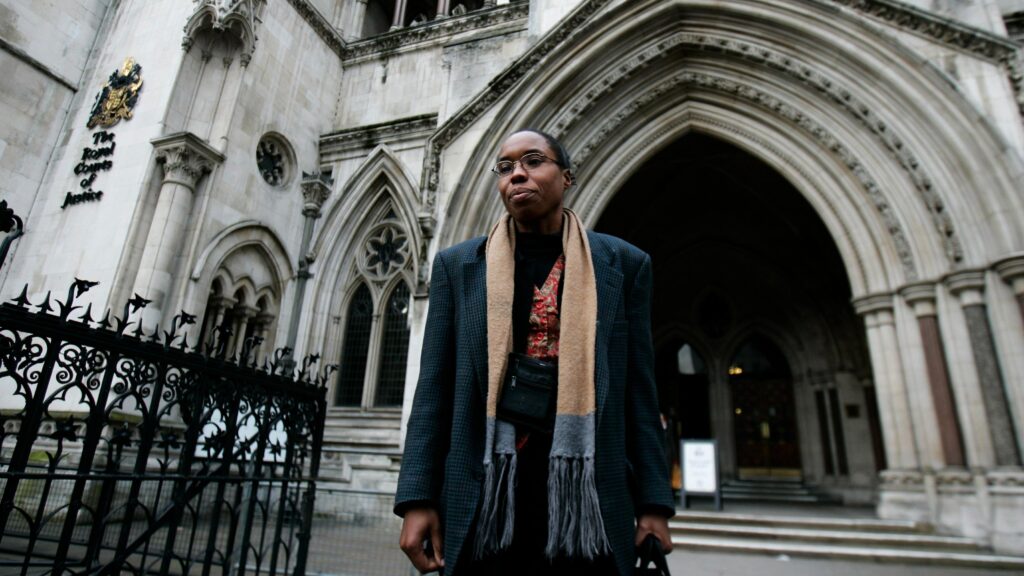
Audience Award Winner: We Are Not Ghouls
Director: Chris James Thompson, Producers: Jessica Farrell, Jack Turner, Andrew Swant
HEADLINERS

Audience Award Winner: Atlanta
Director: Hiro Murai, Producers: Donald Glover, Stephen Glover, Hiro Murai, Stefani Robinson, Paul Simms and Dianne McGunigle
VISIONS
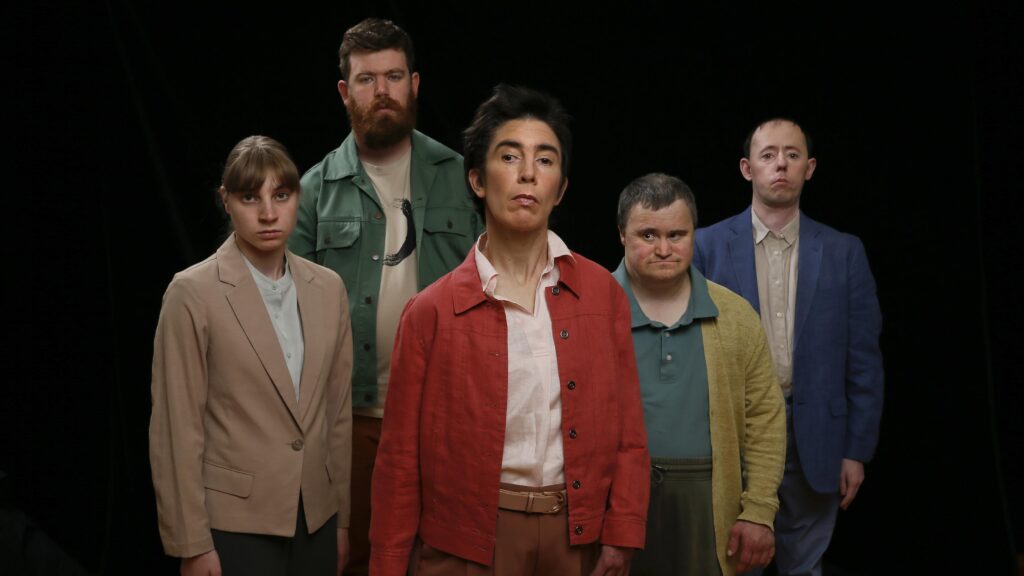
Audience Award Winner: Shadow
Director: Bruce Gladwin, Screenwriters: Michael Chan, Mark Deans, Bruce Gladwin, Simon Laherty, Sarah Mainwaring, Scott Price, Sonia Teuben, Producers: Alice Fleming, Meret Hassenen
MIDNIGHTERS

Audience Award Winner: Bitch Ass
Director: Bill Posley, Screenwriters/Producers: Bill Posley, Jonathan Colomb
GLOBAL presented by Mubi

Audience Award Winner: Without Prescription
Director: Juliana Maite, Screenwriter: Marietere Vélez, Producer: Vilma Liella
24 BEATS PER SECOND

Audience Award Winner: The Return of Tanya Tucker – Featuring Brandi Carlile
Director: Kathlyn Horan, Producers: Kathlyn Horan, Julie Goldman, Christopher Clements, Carolyn Hepburn
FESTIVAL FAVORITES

Audience Award Winner: The Art of Making It
Director: Kelcey Edwards, Producer: Debi Wisch
Shorts Film Program presented by IMDbPro
NARRATIVE SHORTS COMPETITION

Audience Award Winner: Aspirational Slut
Director/Screenwriter: Caroline Lindy, Producers: Kate Hamilton, Ellyn Jameson, Maddy Nimoy, Emily Wolfe
DOCUMENTARY SHORTS COMPETITION

Audience Award Winner: The Sentence of Michael Thompson
Directors: Kyle Thrash, Haley Elizabeth Anderson, Producers: W. Ian Ross, Kyle Thrash
ANIMATED SHORTS COMPETITION

Audience Award Winner: Five Cents
Director/Screenwriter/Producer: Aaron Hughes
MIDNIGHT SHORTS COMPETITION

Audience Award Winner: Tank Fairy
Director/Screenwriter: Erich Rettstadt, Producers: Anita Tung, C.K. Hugo Chung
TEXAS SHORTS COMPETITION

Audience Award Winner: Act of God
Directors/Screenwriters: Spencer Cook, Parker Smith, Producer: Matthew Harrington
TEXAS HIGH SCHOOL SHORTS COMPETITION
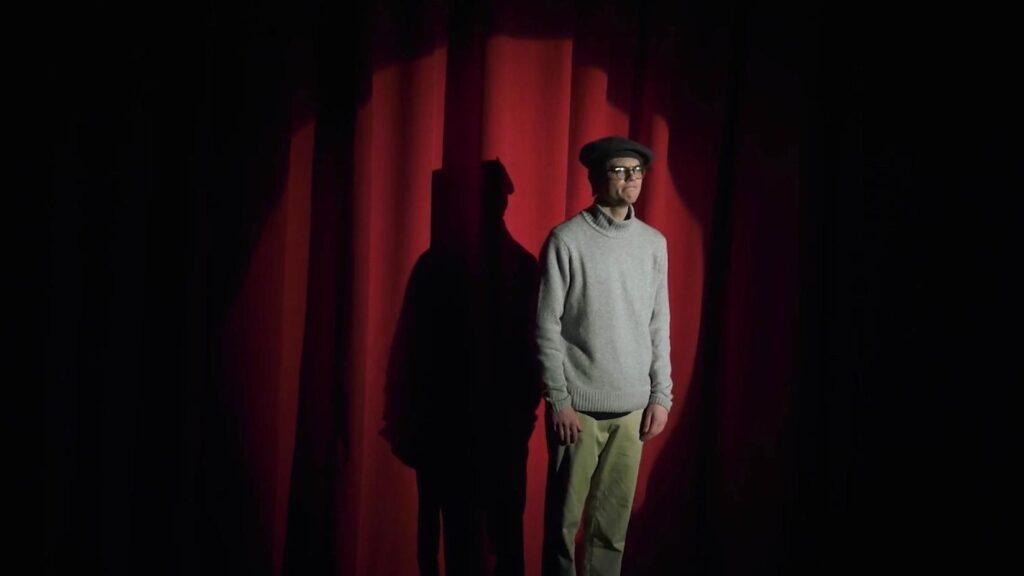
Audience Award Winner: Football.
Director: William Herff, Screenwriters/Producers: William Herff, Nicholas Campos, Peyton Randolph
MUSIC VIDEO COMPETITION

Audience Award Winner: Desirée Dawson – ‘Meet You at the Light’
Director/Screenwriter: Alexander Farah
Episodic Program
EPISODIC PREMIERES
Audience Award Winner: 61st Street
Showrunners: Peter Moffat, J. David Shanks, Director: Marta Cunningham, Screenwriter: Peter Moffat, Producers: Annie Rhodes, Frank Baldwin, Allison Davis
EPISODIC PILOT COMPETITION

Audience Award Winner: Brownsville Bred
Showrunner/Director/Screenwriter: Elaine Del Valle, Producers: Adrienne Lovette, Elaine Del Valle, Leslie Cohen, Debbie Esko-Gold, Eddie Frente
XR Experience
XR EXPERIENCE COMPETITION

Audience Award Winner: Gumball Dreams
Director: Deirdre V. Lyons, Screenwriters: Deirdre V. Lyons, Christopher Lane Davis, Producers: Ferryman Collective, Screaming Color
XR EXPERIENCE SPOTLIGHT

Audience Award Winner: The Choice
Director: Joanne Popinska, Producers: Joanne Popinska, Tom C. Hall
SXSW Film Design Awards (three-way Tie)
EXCELLENCE IN TITLE DESIGN
Audience Award Winner (tie): ‘Blade Runner: Black Lotus’ Title Sequence
Company: CO3/Method Made / Creative Director: John Likens
Audience Award Winner (tie): ‘See’ Season 2 Title Sequence
Company: CO3/Method Made / Creative Director: John Likens
Audience Award Winner (tie): ‘WandaVision’ Main On End Title Sequence
Company: Perception / Creative Director: John LePore
About SXSW Film Festival
Now in its 29th year, SXSW Film Festival brings together creatives of all stripes over nine days to experience a diverse lineup and access to the SXSW Music and Comedy Festivals plus SXSW Conference sessions with visionaries from all corners of the entertainment, media, and technology industries.
About SXSW
SXSW dedicates itself to helping creative people achieve their goals. Founded in 1987 in Austin, Texas, SXSW is best known for its conference and festivals that celebrate the convergence of tech, film, music, education, and culture. An essential destination for global professionals, the annual March event features sessions, music and comedy showcases, film screenings, exhibitions, professional development and a variety of networking opportunities. SXSW proves that the most unexpected discoveries happen when diverse topics and people come together. SXSW 2023 will take place March 10 – 19, 2023. For more information, please visit sxsw.com. To register for the event, please visit sxsw.com/attend.
SXSW 2022 is sponsored by White Claw, Blockchain Creative Labs, Porsche and The Austin Chronicle.






